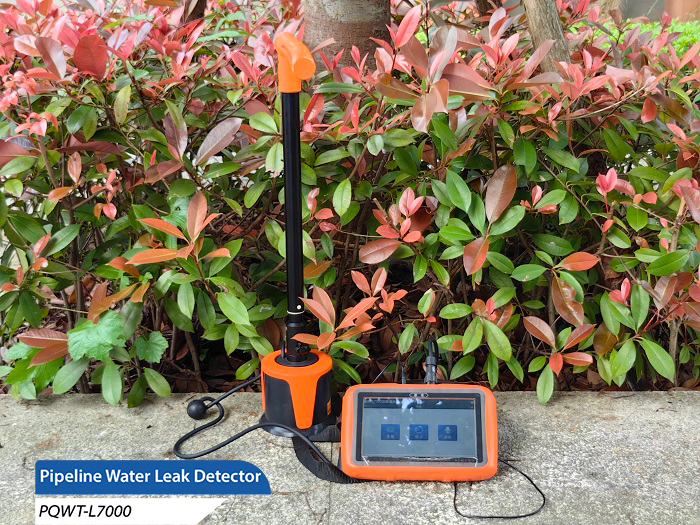In modern urban water supply systems, leakage problems not only cause a great waste of water resources, but also may lead to serious consequences such as road collapse and building damage. Identifying leaks accurately and efficiently is therefore one of the key tasks in maintaining urban infrastructure. pipeline leak detector, as a high-tech detection tool, offers an effective way to solve this challenge thanks to its unique acoustic vibration detection principle.

Principle overview
The core principle of the pipeline leak detector is the use of "acoustic vibration", i.e. the capture and analysis of specific acoustic vibrations generated by water leaks to locate leaks. When a pipe in a water supply network breaks for various reasons, the water inside is ejected from the crack under pressure, a process accompanied by friction between the water and the pipe wall as well as turbulent noise generated by the water flow. These physical phenomena are synthesized into an acoustic signal that can propagate along the pipe and penetrate the soil to the surface.
Workflow
1. Signal acquisition: pipeline leak detector is equipped with highly sensitive sensors, which are placed on the ground or in direct contact with the surface of the pipeline to capture the weak acoustic vibrations generated by the leak. The sensors convert these mechanical vibrations into electrical signals.
2. Signal Processing: The collected electrical signals are amplified by an internal amplifier and filtered and analyzed by a digital signal processor. This process is designed to remove ambient noise, such as traffic noise, wind noise, etc., so as to highlight the acoustic characteristics specific to water leakage.
3. Data analysis and localization: The processed signals are converted into visual graphics, such as spectrograms and signal intensity maps, which are displayed on the instrument's screen. At the same time, the signal will also be output through the headset, so that the inspector can "hear" the sound of water leakage. By comparing the signal strength and frequency characteristics at different locations, the technician can determine the approximate location of the leak. The closer the leak, the sharper and more intense the sound signal usually is.
4. Combination of experience and technology: Although modern pipeline leak detectors are equipped with advanced analytical tools, the experience of the inspectors is still crucial. They are able to quickly and accurately locate leaks based on the nuances of the sound, combined with site conditions.
Technical advantages
1. Non-destructive detection: Leaks can be located without excavation, reducing damage to existing infrastructure.
2. High efficiency: compared with the traditional manual listening to leaks, automation and digital detection means greatly shorten the detection time.
3. High accuracy: With the help of modern signal processing technology, even in complex environments can also achieve more accurate positioning.
4. User-friendly: Through the intuitive graphical interface and headphone feedback, the threshold of operation has been lowered, so that even non-professionals can master the use of the method more quickly.
The pipeline leak detector has become an indispensable tool in modern urban water management with its efficient detection capability and environmental friendliness. With the continuous progress of technology, the future pipeline leak detector will be even smarter, further improving the efficiency and accuracy of leak detection, contributing to the guarding of urban water security.








